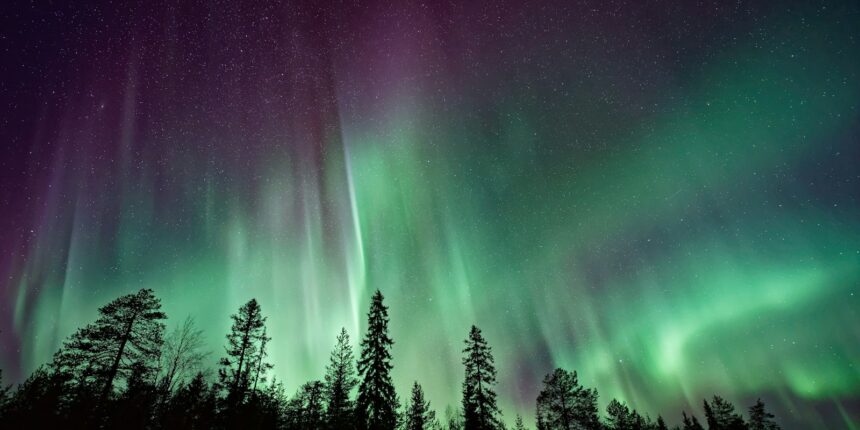On the night of November 11, skies over Texas and parts of the southern United States glowed in pink and green—something that rarely happens this far south. The northern lights, or aurora borealis, are usually confined to high-latitude regions near the Arctic Circle.
So why did Texans suddenly get a front-row seat to one of Earth’s most dramatic natural shows? The short answer is that a powerful solar storm hit Earth’s magnetic field.
According to the NOAA Space Weather Prediction Center (SWPC), a G4 (Severe) geomagnetic storm reached Earth earlier today. That’s one step below the strongest possible classification, G5. The disturbance was triggered by an intense coronal mass ejection (CME)—huge bursts of charged particles from the Sun that left the Sun on November 9 and 10 and are forecast to reach Earth in roughly two to three days, with impacts expected from November 11-13.
Also Read: Physicists Prove the Universe Can’t Be a Computer Simulation
When such a surge collides with Earth’s magnetic field, it pushes energetic particles deep into the atmosphere, exciting oxygen and nitrogen atoms. The result is light—green, red, and violet curtains shimmering across the night sky.
For most of the year, the auroral oval hovers around polar regions. But during storms like this, it expands dramatically. This time, the auroral oval stretched far enough south to include states such as Colorado, Missouri, and even parts of Texas. News outlets like Chron confirmed sightings from the Panhandle to the Gulf Coast—some observers even captured red and purple arcs near the horizon.
But why did this particular storm have so much power? It comes down to solar activity. Approximately every eleven years, the Sun enters what scientists call a solar maximum—a phase of heightened magnetic turbulence. During this time, solar flares and CMEs become more frequent. The current cycle’s activity has been increasing sharply, and this week’s storm is one of the strongest of the year.
Also Read: AI Successfully Controls Satellite Attitude in Orbit for the First Time
At the heart of the phenomenon lies a simple bit of space physics. The NASA Science page on auroras explains that when electrons and protons from the solar wind follow Earth’s magnetic field lines into the upper atmosphere, they collide with gases about 100–300 kilometers above us. Oxygen glows green at lower altitudes and red higher up; nitrogen adds blue, purple and pink tones. The altitude and energy of the particles decide the colors people see.
If you step outside tonight and the sky is clear, look north and keep your camera ready. Even faint glows may show up on long-exposure shots. And if you miss it, don’t worry—solar maximum is expected to continue through 2025, meaning more chances for unexpected auroras well beyond the Arctic.
For a phenomenon born from violent solar explosions, the aurora remains one of nature’s gentlest wonders. It is a stunning interaction between the Sun and Earth’s magnetic field—one that, for a rare night, stretched all the way to Texas.







